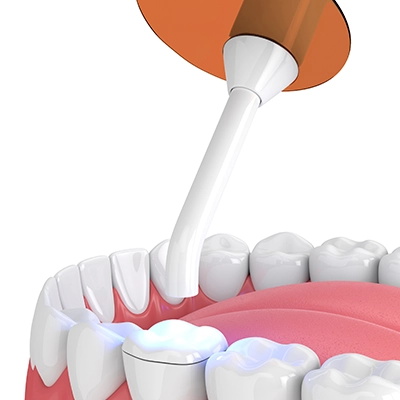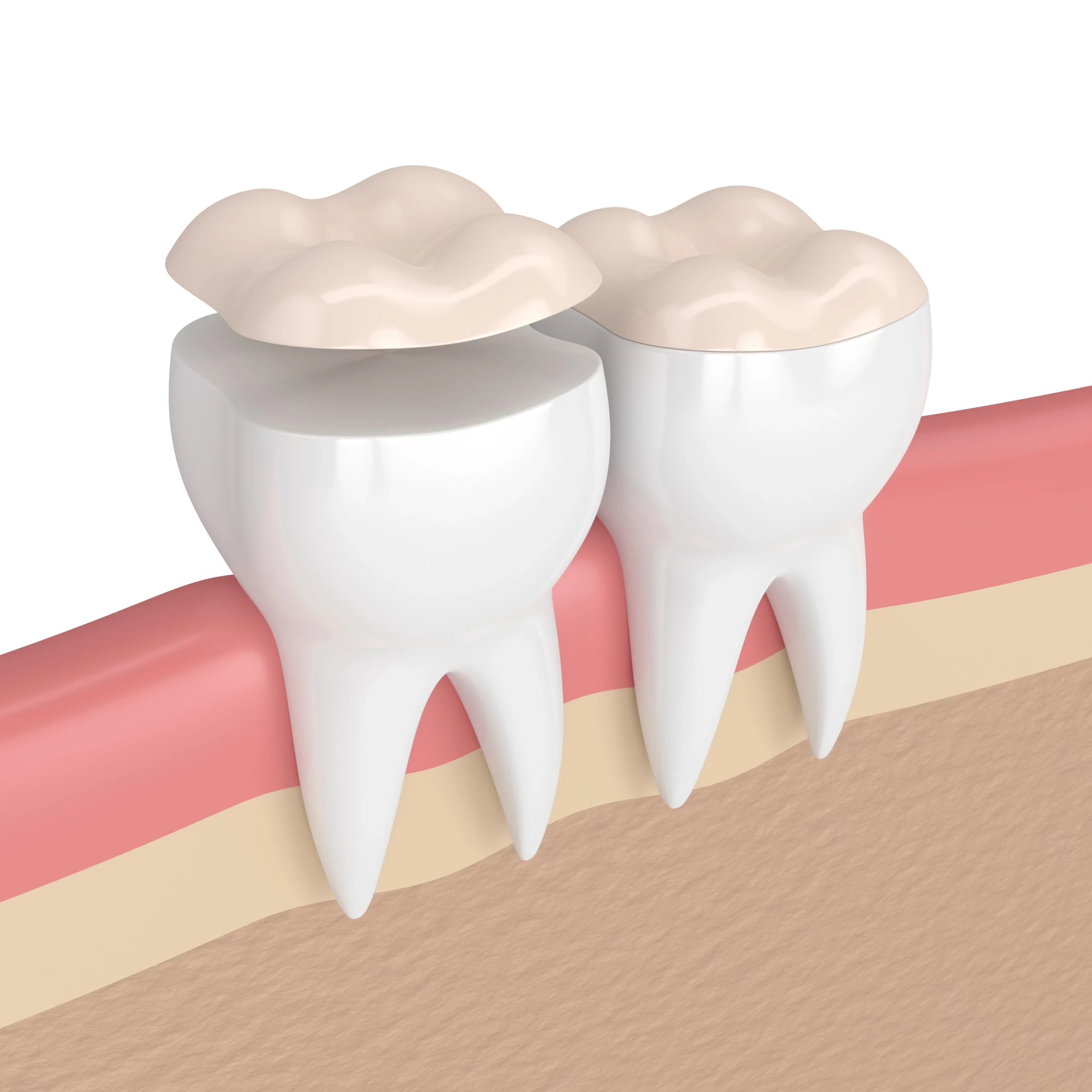Restorative dentistry is a field of dentistry focused on repairing damaged or replacing missing teeth. The primary goal of dental restorations is to improve the look, feel, and function of teeth. Typically, general dentists complete these restorations, which include fillings, crowns, dental implants, dentures, and inlays/onlays.
Dr. Subha Yerabollu at Prime Family Dentistry in Stone Ridge typically recommends inlays or onlays when a dental filling is not enough but a crown is too much. While similar, there are a few differences between these two. In this article, we’ll explain these differences.

Inlays vs Onlays: What is the Difference?
A dental inlay is used to restore a tooth with a cavity that is centered in the tooth rather than along the cusps. It is a pre-molded filing that fits within the cusps of the affected tooth. Typically, the cavity has not progressed to more extensive decay.
A dental onlay is used to restore a tooth with more extensive damage that extends into the cusps of the tooth rather than being centered. The tooth is too damaged or an inlay or filling but not damaged enough to need a crown.
The process of getting an inlay or onlay is fairly painless and straightforward. The dentist will start by administering local anesthesia to the area. Once the anesthesia has taken effect, a drill will be used to open the tooth so that the decay can be cleaned out. Next, an impression will be taken of the tooth and sent to the lab for the fabrication of the inlay or onlay.
Typically, porcelain or composite resin is used to create these restorations because these materials can be matched to the color of the natural tooth. Therefore, the restoration is almost invisible and more durable than a filling or crown.

Why choose an Inlay/Onlay over a plastic filling?
There are several reasons why you would want to choose an inlay or onlay over a filling:
A dental filling requires healthy tooth structure to hold it in place. If your tooth is extensively damaged, the filling may fall out. This will ultimately lead to additional damage to the affected tooth, which may require a crown or extraction.
In some cases, a large dental filling may cause sensitivity to cold due to the proximity to the nerves.
The larger a dental filling, the higher the risk of breakage. Dental inlays and onlays are made of stronger, more durable materials.
Finally, the last reason you may want to consider an inlay or onlay over a dental filling for your restoration is that a custom fabrication is less likely to wear out, stain, or break down.
Do You Need Restorative Dentistry?
If you have damaged or missing teeth, schedule your consultation with Dr. Yerabollu at Prime Family Dentistry. We are located at 24805 Pinebrook Road in Stone Ridge. We offer extended hours on Thursdays, as well as Saturday hours for patients who are unable to take time off work. Our office hours are Monday and Friday from 7:30 AM to 3:30 PM, Thursday from 10:00 AM to 7:00 PM, and Saturday from 8:00 AM to 1:00 PM.
Dr. Yerabollu graduated in 2009 from New York University School of Dentistry and has been practicing in the DC metro area since 2010. She strives to stay on top of the latest in dental advancements and makes sure that her patients understand their dental procedures.
Inlay and Onlay FAQs
Dr. Yerabollu believes that it is important for patients to understand dental procedures before undergoing them. Therefore, she is happy to address any questions and/or concerns that you may have. Below are answers to some of the most common questions she gets about dental inlays and onlays.
How long do dental inlays/onlays last?
According to research, both dental inlays and onlays will last for up to 30+ years, with proper care and maintenance. This includes avoiding crunching ice and hard candies, as well as not chewing on non-food items such as pens and pencils. You should also practice proper oral hygiene habits including brushing twice daily with a fluoride toothpaste, flossing at least once, and visiting the dentist every 6 months for a comprehensive exam and cleaning.
What are inlays/onlays made of?
Inlays and onlays are typically made of porcelain or composite resin because these materials can be matched to the natural color of the tooth. This makes the restoration almost invisible. However, gold is also an option- but is significantly more expensive than the other two options. Composite resin is the least expensive- and the least durable. Gold and porcelain last the longest.
How much do inlays/onlays cost?
The average cost of inlays and onlays without dental insurance ranges from $650 to $1,200 per tooth. However, there are several factors involved in determining the cost:
Material used
Location of clinic
Dental insurance coverage
Experience/expertise of the dentist
Typically, dental insurance will cover up to 50% of restorative procedures such as inlays and onlays.

